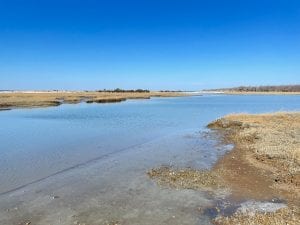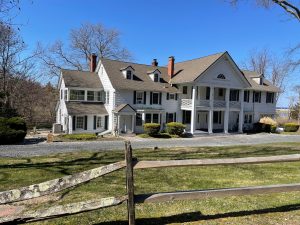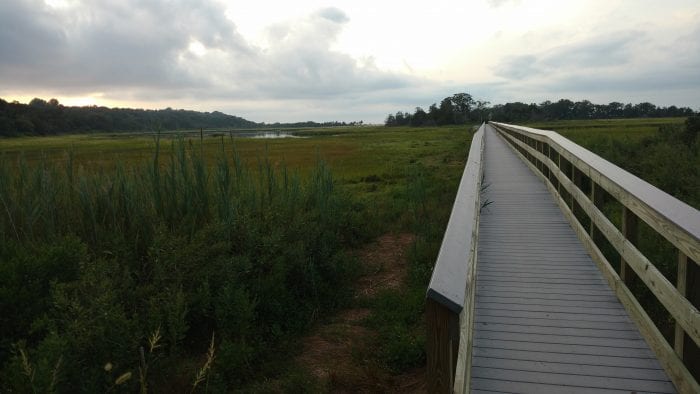Local state officials sponsor bill to protect Flax Pond tidal wetland
A bill currently awaiting Gov. Kathy Hochul’s (D) signature will help to protect a local tidal wetland.

Bill A10187 will establish the Flax Pond tidal wetland in Old Field as a sanctuary and also amend the navigation laws to prohibit the use of motor boats within that sanctuary.
The bill was sponsored by state Assemblyman Steve Englebright (D-Setauket) in the Assembly and state Sen. Mario Mattera (R-St. James) in the Senate.
The bill states that “hunting, fishing, trapping and the use of motor boats are not compatible with the primary purposes and management goals of the sanctuary.” Once enacted, signs will be posted to warn boaters that they cannot enter. The law will not apply to emergency and rescue vessels.
Anyone found guilty violating the provisions will be fined up to $100 and/or imprisoned up to 10 days.
The Flax Pond tidal wetland area is about 150 acres and was acquired by the state in 1966. Is it under the joint jurisdiction of the New York State Department of Environmental Conservation and Stony Brook University. SBU uses the wetland area as a field laboratory for research and education, while the DEC maintains it for habitat protection and for public use.
In addition to the wetland, the property includes the SBU School of Marine and Atmospheric Sciences Flax Pond Marine Lab and the Childs Mansion. The home once belonged to Eversley Childs, who was president of the Bon Ami cleaning products company in the early 1900s.
Englebright said for about four decades he has been trying to get legislation passed to protect Flax Pond and said Mattera was a big help in getting it through the state Senate.
“We basically have joined together to put our shoulders to the wheel to get this bill through each of our respective legislative houses,” Englebright said. “And there it is, for the first time in all of these years.”
Mattera said he was happy to help to get the bill passed, and he’s optimistic that the governor will sign it.
“I don’t think there’s going to be any kind of an issue,” Mattera said, adding he feels its passing is crucial not only for the wetland but also for the surrounding area.
Mattera said securing state money to dredge the inlet at Flax Pond is next as there are concerns that the continuation of terrible storms hitting the area could close up the inlet.
Englebright said the Flax Pond tidal wetland area was created for the original purpose of academic research and education, and also for the public’s passive enjoyment. He said the bill makes permanent what the original premise was.
“The marsh has been degraded,” he said. “It has lost much of its usefulness due to unregulated activities there and extraction activities. It has undergone some considerable negative consequences.”
The assemblyman added that extraction activities include people taking oysters, blue mussels and crabs, especially in large quantities, and the shooting of birds makes it difficult for researchers to measure what’s left of the marine life. Motorboats and jet skiing in the wetland also complicate matters.
He said proper research depends on “having a pristine unspoiled place.”
Environment
Englebright said it was important to protect tidal wetlands such as Flax Pond because they “are highly stressed due to climate change and sea level rise, as well as pollutants that are entering the estuaries and the pressure of extraction activities.”
He explained that a tidal wetland is a bio-geological phenomenon.
“The biological part is, of course, all of the organisms that grow in the marsh that contributed to the creation of the wetland itself,” he said. “The most prominent of that is a series of grasses. These are grasses that are able to tolerate salt.”
There are two dominant high marsh grasses that when the first settlers arrived here and there was no hay from a previous season, they were able to use them to feed their livestock. The high marsh grass — “salt hay” — continued to be harvested on Long Island until the 1920s.

“The geological part of the marsh is why we don’t want the boats because the salt marsh is a sediment trap,” he said.
He added, sediment is important as it creates beaches such as those at West Meadow and Old Field. Tides carry into inlets silt and clay fractions which become the soil component of the wetlands.
Englebright said motorized boats or jet skis that generate “wave slap,” reenergize the movement of sediment or disturb the movement of the sediment, which in turn reelevates and suspends into the water the silt that can be up to 60% of the soil.
He added, “If it gets resuspended on the outgoing tide, the result is the loss of the marsh.”
History
Robert Cushman Murphy, who was an ornithologist, loved Flax Pond and was a close friend of philanthropists Ward and Dorothy Melville. For a while, he lived on the Melville estate in Old Field.
After the Childs estate went into probate in the early 1960s, according to Englebright, the executors almost sold Flax Pond to developers, who would have built condominiums along the periphery of the pond. Englebright said Murphy talked to Melville and then acting president of SBU, Karl Hartzell, to see what could be done to save the Flax Pond area. Cushman appealed to the Village of Old Field trustees, and when he realized they might side with the developers, Melville reached out to then New York State Gov. Nelson Rockefeller (R). The Stony Brook resident had just donated land to the State University of New York for the Long Island college to move to its current location.
“He had some clout and he used it on behalf of our community,” Englebright said. “It was political muscle that basically led to acquiring the property.”
He said when the state university acquired half of the property they had to set up marine studies which justified their purchase.
“Of course, that has led to one of the great marine research centers of the hemisphere, if not all of Earth,” Englebright said. “It’s a globally significant research center. It’s an entire division now within the university.”







